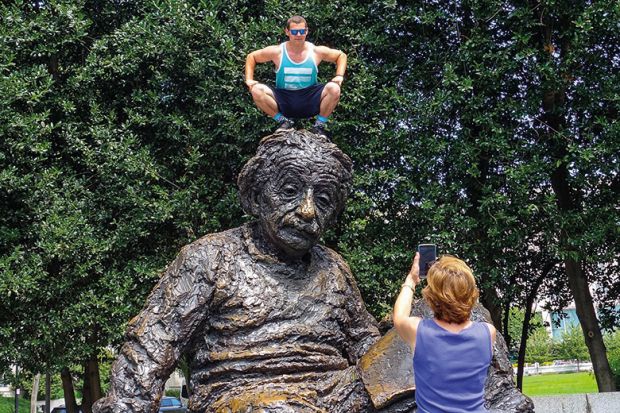Who wrote the greatest scientific paper of all time?
Is it Albert Einstein, Niels Bohr or Alexander Fleming for the era-defining papers that would shape the future of science? Perhaps it is Francis Crick and James Watson for their 1953 Nature article on the structure of DNA, or maybe Marie Curie for her brilliant work on radioactivity?
Assessed purely on metrics, however, none of them comes close to a lesser-known US chemist whose turned his PhD research into one of the most cited scientific papers in history.
According to analysis published in the journal Current Science, a 1976 paper by Marion M. Bradford, a University of Georgia biochemist, has been cited an incredible 157,683 times, one of just three papers to achieve more than 100,000 citations.
To put that in perspective, if you were to print out the first page of every paper listed on Thomson Reuters’ Web of Science and stack them up, the pile would nearly reach the summit of Mount Kilimanjaro, Nature reported in November 2014. Only the top 1.5m (4.9ft) would have 1,000 citations or more.
Dr Bradford’s paper, published in the journal Analytical Biochemistry, explained how chemists could quickly quantify the amount of protein in a sample, but he told Times Higher Education that he did not view it as his most significant contribution to science.
“My personal best work is probably in the patent literature in the area of chemicals from renewable resources,” said Dr Bradford, who left the University of Georgia in 1983 for a career in industry at A.E. Staley, the manufacturer bought by British sugar firm Tate & Lyle in 1988.
“The work in the paper was just a particular phase of my career and not my long-term impact on the field of biochemistry,” added Dr Bradford, who is now retired.
While he knew that his paper had been highly cited, he was not aware of its amazing citation record, Dr Bradford said.
“When I did the work in graduate school, my objective was to simplify the measurement of protein in solution from the procedure in standard use at that time,” he explained, saying that his near-instantaneous procedure replaced a method that took more than an hour.
“Citations indicate the rate of use of a paper, thus somewhat reflect[ing the] importance of the literature,” said Dr Bradford, although he added that he did not claim that the work is the most important piece of literature.
“It has helped scientists do their work faster and more easily, so it has met its original objective from 40 years ago,” he said.
Overall, the new analysis of most-cited papers by Yuh-Shan Ho, director of the Trend Research Centre at Taiwan’s Asia University, and James Hartley, emeritus professor of psychology at Keele University, titled “Classic articles published by American scientists”, identified a total of 4,909 articles that had gained more than 1,000 citations between 1900 and 2014.
The paper identified mathematical physicist Edward Witten, from the Institute for Advanced Study at Princeton University, as the US scientist who had written the most articles with 1,000-plus citations (30, including 12 on his own).
Harvard University had produced the most “classic” papers (532) – twice as many as the second-placed institution, the Massachusetts Institute of Technology (251), and third-placed Stanford University (232). Just 109 of the 20,276 authors listed on classic articles had won a Nobel prize, the paper adds.
POSTSCRIPT:
Print headline: Highly cited paper ‘was just my grad school work’
Register to continue
Why register?
- Registration is free and only takes a moment
- Once registered, you can read 3 articles a month
- Sign up for our newsletter
Subscribe
Or subscribe for unlimited access to:
- Unlimited access to news, views, insights & reviews
- Digital editions
- Digital access to THE’s university and college rankings analysis
Already registered or a current subscriber? Login








